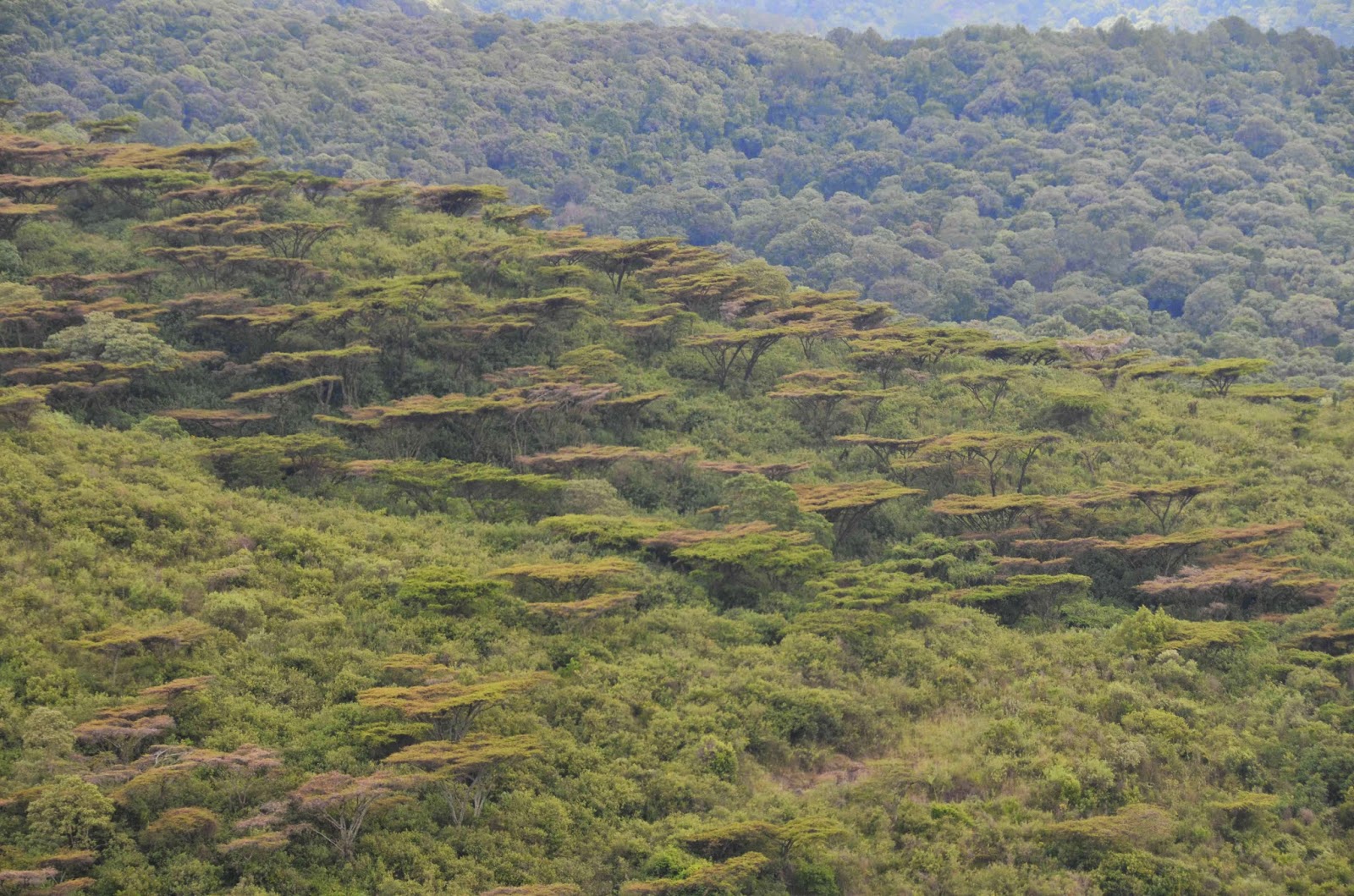We are preparing (not very rigorously unfortunately) for an assault on Kilimanjaro, and we thought that a walk at altitude would be a good thing. The highest peak is at an altitude of 4321 m, but the summit was out of our reach on this day. Nevertheless we managed to do a strenuous hike up a rather steep path to the top of Enderbess Bluff, at a height of 2600 m.
Now that I have my Kenyan residency (Hooray!!) entry to the park only cost me $8. Des and Tabby had to pay $30 each. The car was $15 and we were obliged to take a ranger with us. He was designated a 'guide' and this cost an additional $35. So much for a cheap day out in the forest.
Here is a photo-essay of our adventure:
Yes, it looks like North West NSW, complete with the eucalypt trees, but that is Mt Elgon in the distance covered with cloud. After a week of rain and coolish weather, it was a lovely day.
In the rural area before the entrance to the park there are a number of coffee plantations. Coffee likes altitude, and as you see, they grow their coffee as an under-storey. This is becoming increasing popular around the world although it takes more effort to produce. The coffee matures more slowly and develops a richer flavour (that is the theory anyway).

This is a wonderful tropical rainforest ... definitely more lush that Kakamega. The trees are massive and the canopy very dense in places. The above photo is a horizontal branch of a large buttressed rainforest tree.
Kitum Cave is the most visited spot in the park. It is huge, consisting of an ancient lava tube. I heard a rumour that the cave system reaches all the way into Uganda, but I think that may be an exaggeration.
We walked about 150 metres into the cave until it was pitch black.
Apparently the soils in the area lack certain salts and minerals. Animals come to this cave to lick these requirements from the soil and cave walls. There is certainly lots of evidence of animal visitation; bush buck, buffalo and elephant included.
This is the entrance to the cave. It is a place where the local Masai used to live up until recently. It is thought that up to 1000 people used to shelter here. Fires were used to scare away animals that visited at night.
From inside the cave, looking towards the light.
There were quite a few troupes (?) of baboons. I have heard that they can be inquisitive and, at times, downright aggressive. These were very timid and would not let us come within 30 metres before they scurried off into the bush.
Here are Des, Tabby and Boniface contemplating Enderbess, the basalt hill that we are about to climb. This is Kenya and so the path is slippery mud and basically goes straight up the side of the hill. I can walk for long periods but the intensity of this climb really did me in. I am hoping that Kilimanjaro is not as steep ... at least until about day 4!

From the top the view is spectacular even though Kenya always seems to have haze in the air. It was also quite chilly at 2600 m. The hills in the distance and to the left marks the start of Uganda.
Right below us was the rainforest, and beyond that the cultivated fields of Western Kenya. This region grows a large percentage of the country's maize. The tops of the trees splay out like no other rainforest I have seen - truly African.
This also is truly African - the acacia trees covering the valley slopes. The elephants like these trees. Unfortunately, instead of grazing on the leaves and branches, they prefer to knock over the tree and make a complete meal of it. Boniface is philosophical, "there are only 600 elephants but millions of acacias".
Also in the distance we can see the traditional huts of local farmers. They have been won over by the National Park as clean water supplies have been provided and the Kenyan Wildlife Service has built 14 schools in the area. The locals are now one of the biggest protectors of the park, and poaching is almost unheard of.
As we drive to our last cave we scare a male water buck who was sitting by the side of the road. They are very large but amazingly agile and very quick. Within seconds he had disappeared up a steep, forested slope.
This is the entrance to Makengeni (Sp.?) Cave. It is not as large as Kitum Cave but the entrance is much higher and there is a permanent waterfall at the cave's mouth. This is not a salt lick cave and so fewer animals visit, but apparently buffaloes like to spend the night here.
The scale of these caves suggests the violent volcanic activity that must have occurred when Mt Elgon was active. As I have said in a previous blog, its caldera (which we didn't get up to) is one of the largest in the world - this was one massive volcano.
And the best news of all. On our way home we stopped in Kitale to buy groceries. Near the new Nakumatt supermarket/variety store there is a new cafe - with the best coffee West of Nairobi. Ah, bliss.














No comments:
Post a Comment